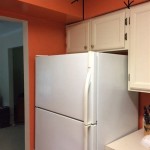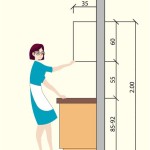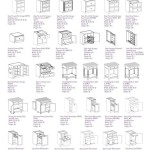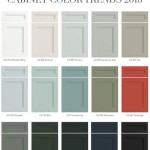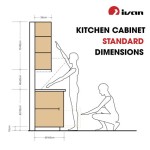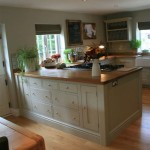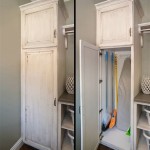Painting Shiny Kitchen Cupboards: A Comprehensive Guide
Shiny kitchen cupboards, often crafted from materials like laminate, melamine, or high-gloss acrylic, present a sleek and modern aesthetic. However, these surfaces pose unique challenges when considering a new coat of paint. The inherent smoothness and non-porous nature of these materials make it difficult for paint to adhere properly, potentially leading to chipping, peeling, and an overall unsatisfactory finish. This article provides a detailed guide on how to successfully paint shiny kitchen cupboards, ensuring a durable and visually appealing result.
Proper preparation is paramount when painting any surface, but it is especially crucial for shiny kitchen cupboards. This process ensures that the new paint layer has a solid foundation to bond to, preventing premature failure. Neglecting to properly prepare the surface will invariably result in a compromised finish, requiring rework and additional expense.
Key Point 1: Thorough Cleaning and Degreasing
The initial step involves thoroughly cleaning the cupboards to remove any grease, dirt, or grime that has accumulated over time. Kitchen surfaces are particularly susceptible to grease buildup from cooking, and the presence of contaminants will impede paint adhesion. A strong degreaser, such as trisodium phosphate (TSP) or a phosphate-free alternative, is recommended. It is essential to follow the manufacturer's instructions for proper dilution and application. Apply the degreaser with a sponge or cloth, scrubbing the surface to loosen any stubborn residue. Rinse thoroughly with clean water to remove all traces of the cleaning solution. Allow the cupboards to dry completely before proceeding to the next step.
For heavily soiled areas, repeated applications of the degreaser may be necessary. A stiff-bristled brush can be used to agitate particularly stubborn grime. Ensure that all cleaning residue is completely removed, as any remaining soap or degreaser will interfere with the paint's ability to bond with the surface.
After the initial cleaning, an additional wipe-down with a tack cloth is advisable. Tack cloths are designed to remove any remaining dust particles that may have settled on the surface during the drying process. This further ensures a clean and smooth substrate for painting.
Key Point 2: Surface Preparation Through Sanding and Priming
Sanding provides the critical element of creating a slightly roughened surface, or "tooth," to which the primer and paint can adhere. Given the inherent slipperiness of shiny kitchen cupboard materials, sanding is not optional. Employing a fine-grit sandpaper, typically between 220 and 320 grit, is recommended. Avoid using coarser grits, as they can leave visible scratches on the surface. Lightly sand the entire surface of each cupboard, focusing on areas that are particularly smooth or glossy. The goal is not to remove the original finish entirely but rather to create a subtle texture that promotes adhesion.
After sanding, thoroughly remove all sanding dust with a vacuum cleaner and a tack cloth. Any remaining dust particles will compromise the smoothness and adhesion of the paint. Ensure all corners and crevices are free of debris.
Priming is the next crucial step. A high-quality bonding primer, specifically formulated for use on slick surfaces like laminate or melamine, is essential. These primers contain additives that enhance adhesion and prevent the topcoat from peeling or chipping. Apply the primer in thin, even coats, using a high-quality brush or roller. Allow the primer to dry completely according to the manufacturer's instructions. Multiple coats of primer may be necessary to achieve optimal coverage and adhesion. Some primers can be tinted to more closely match the final paint color; this can improve coverage and reduce the number of topcoats required.
After the primer has dried, inspect the surface for any imperfections, such as drips or runs. Lightly sand any imperfections with fine-grit sandpaper to create a smooth surface for painting. Again, remove all sanding dust before proceeding.
Key Point 3: Choosing the Right Paint and Application Technique
Selecting the appropriate paint is vital for achieving a durable and aesthetically pleasing finish. Acrylic latex or alkyd paints are generally recommended for kitchen cupboards due to their durability and ease of cleaning. Alkyd paints offer superior hardness and resistance to wear and tear but require mineral spirits for cleanup. Acrylic latex paints are water-based, offering easier cleanup and lower VOC emissions. Consider using a paint specifically formulated for cabinets or furniture, as these paints are designed to withstand the rigors of daily use.
Paint finishes range from matte to high-gloss. A satin or semi-gloss finish is often preferred for kitchen cupboards, as it provides a balance between durability and ease of cleaning. Matte finishes can be more difficult to clean and may show fingerprints more readily, while high-gloss finishes can accentuate imperfections in the surface.
Apply the paint in thin, even coats using a high-quality brush, roller, or paint sprayer. A brush is suitable for detail work and smaller areas, while a roller is ideal for larger, flat surfaces. A paint sprayer provides the most even and professional-looking finish but requires more skill and preparation. If using a brush or roller, choose one with a fine nap or bristles to minimize brushstrokes or roller stipple. Allow each coat of paint to dry completely before applying the next coat. Multiple thin coats are preferable to one thick coat, as they are less likely to drip or sag and will result in a more uniform finish.
Between coats, lightly sand the surface with fine-grit sandpaper to remove any imperfections and promote adhesion of the subsequent coat. Remove all sanding dust before proceeding.
For best results, consider using a self-leveling paint. These paints are designed to minimize brushstrokes and roller marks, resulting in a smoother and more professional-looking finish. Self-leveling paints are particularly beneficial for beginners or those seeking a flawless finish.
Pay close attention to the edges and corners of the cupboards. These areas are prone to paint buildup and drips. Use a small brush to carefully apply paint to these areas, and feather the edges to blend them seamlessly with the surrounding surface.
Once the final coat of paint has dried completely, allow the cupboards to cure for several days before reattaching hardware and putting them back into use. This allows the paint to fully harden and reduces the risk of damage. Handle the freshly painted cupboards with care to avoid scratching or chipping the finish.
When reattaching hardware, consider using new or updated hardware to complement the new paint color and enhance the overall aesthetic of the kitchen. New hardware can significantly transform the look of the cabinets and add a touch of personalization.
Maintaining painted shiny kitchen cupboards involves regular cleaning with a mild detergent and water. Avoid using abrasive cleaners or scouring pads, as they can scratch or dull the finish. Wipe up spills promptly to prevent staining. With proper care and maintenance, a well-painted set of shiny kitchen cupboards can provide years of beauty and functionality.

How To Create A High Gloss Kitchen

How To Paint Laminate Kitchen Cabinets Perfect Finish Tips

Can You Paint High Gloss Kitchen Cupboards Wespray

How To Paint Kitchen Cabinets In 7 Simple Steps

What Is The Best Spray Paint On Kitchen Cabinets

Go For High Gloss Cabinets Stone Hall Cabinetry

Step By How To Paint Your Kitchen Cabinets

High Gloss Kitchen Cabinets Professional Guide Pa

How To Choose A Paint Finish Benjamin Moore High Gloss Kitchen Cabinets

Can Kitchen Spray Be Used To Cover A Gloss Wespray
Related Posts

